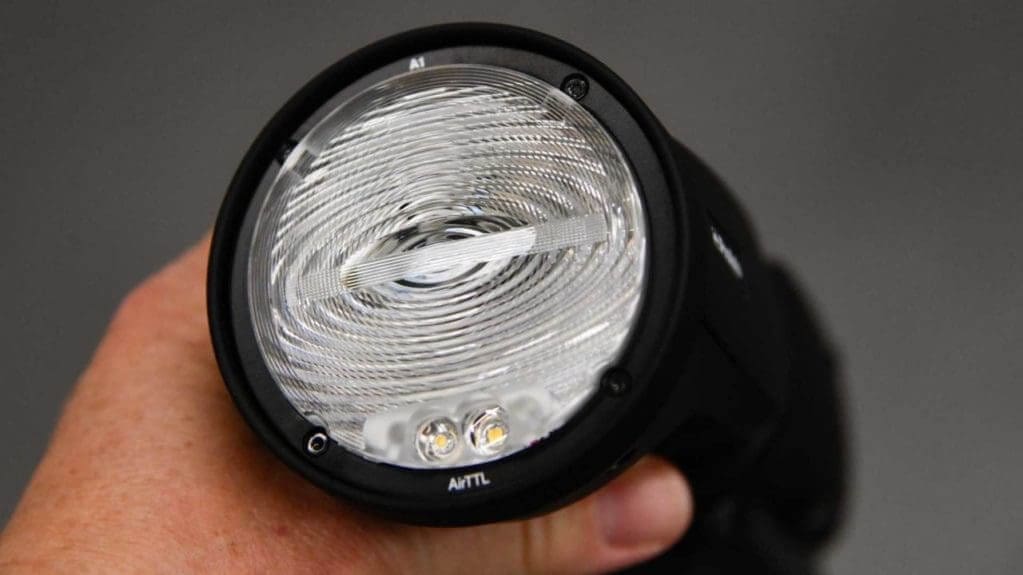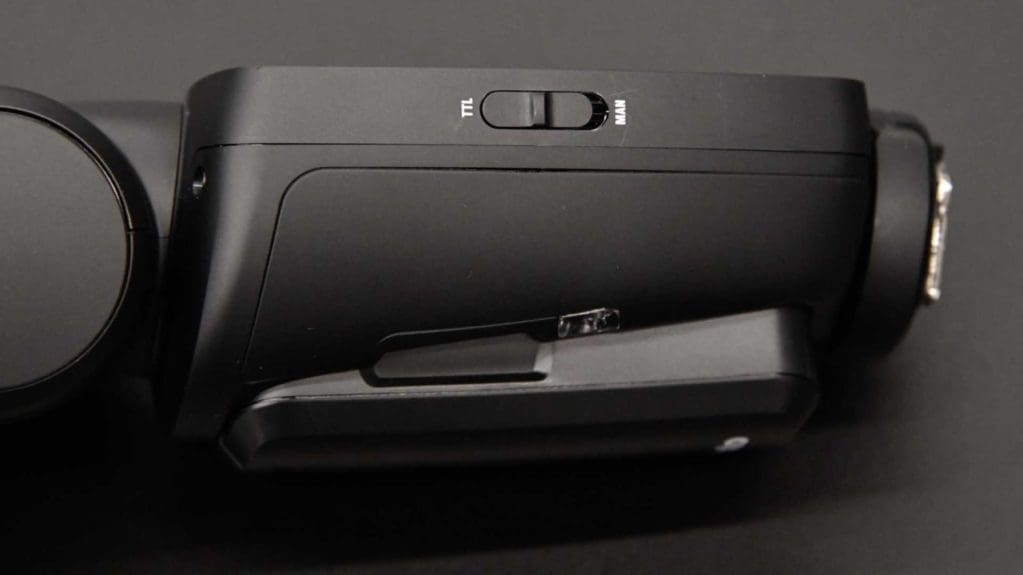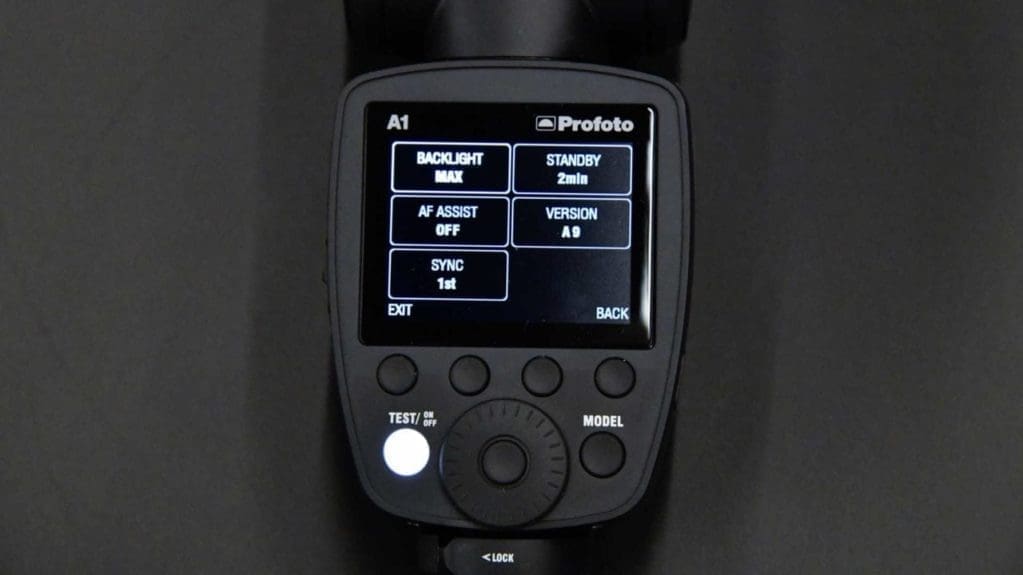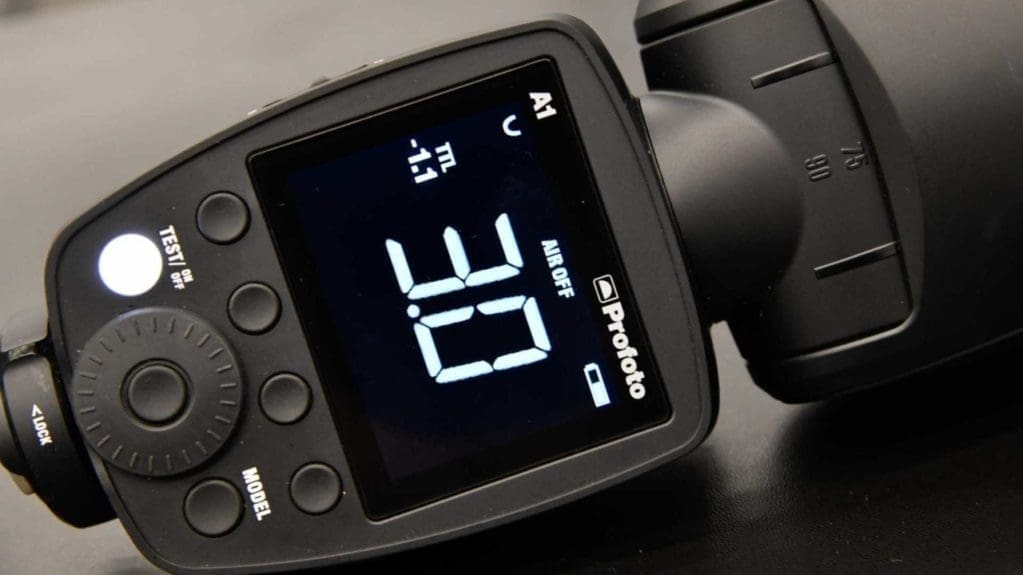[nextpage title=”Introduction” ]
Profoto A1 Snap Verdict
Some speedlight or flashgun users may be surprised by the Profoto A1’s price and relative lack of power in comparison with some other flash units but the A1’s strong suit is its light quality and speed of operation. The lens and internal reflector have been designed to enable it to produce natural looking light with gradual fall-off.
It’s also well-built and designed to survive extended use of high speed sync mode.
For
- More natural light than from a standard speedlight
- Air TTL built-in
- Easy to use
Against
- Expensive for the power rating
- Not weatherproof
- Screen not touch-sensitive
What is the Profoto A1?
Profoto is calling the A1 the World’s smallest studio light, but as many observers have pointed out, it looks a lot like a speedlight (aka flashgun) and it can be mounted in Canon and Nikon camera hot-shoes. However, Profoto’s high-quality studio light manufacturing heritage is evident and the company’s Air TTL system is inside allowing the flash to trigger other flashguns remotely and use the camera’s TTL (through-the-lens) exposure metering system. It’s currently available in Canon and Nikon fit and the Sony version will be along at some point in 2018.
Profoto A1 Features
Dating from 1968, Profoto has a strong reputation amongst professional photographers for producing high-quality studio flash units. In 2008 the company launched the D1, its first monolight – a studio light that uses mains power.
In 2013 the Profoto B1 light was launched, featuring a removable battery to make travelling to and shooting on location easier. This was followed by the smaller, lighter battery-powered B2 light.
The Profoto A1 is the next logical step for the company being smaller still than the B2, having a removable Li-ion battery and a speedlight-like design.

Unusually, the A1 has a round lens and its Fresnel design is very distinctive. It seems a small point, but the more traditional rectangular design of flashgun head was originally conceived to pump light out across a rectangular film frame to alter the exposure. Profoto is more interested in helping people work with and shape light for more creative images. The circular form is also a closer representation of the sun so that catchlights have a more natural shape.
With a power rating of 76 Ws, which is roughly equivalent to a guide number of around 40, the A1 may not seem the most powerful flash but the Fresnel lens and flash tube is designed to help make better use of that light than some other flash units.
Profoto introduced its Air Remote TTL with the B1 light in November 2013 to enable the studio light to be used in tandem with a camera’s TTL metering system. This technology has been included in the A1 so that an on-camera unit can be used to control and fire an off-camera flash.

High-speed sync (HSS)
A drawback of older or lower-level flash devices is that they can only sync with focal plane shutters at relatively slow shutter speeds, 1/200 or 1/250 sec is typical. In common with many new high-end flash units the A1 has a high-speed sync (HSS) mode that enables it to be used at very fast shutter speeds. This is especially useful with a light that is likely to be used outside where fast shutter speeds may be required to allow wide apertures to be used for shallow depth of field.
Heat generation can be an issue with shooting in HSS mode and with this in mind Profoto used a ceramic reflector. Some manufacturers warn that their flash should be allowed to cool after shooting 20 or so images in quick succession but the A1 can be used for around 50 full-power shots in a sequence before the heating protection system kicks in and reduces the recycling time.

A1 Battery and accessories
In a key departure from most speedlights the A1 uses a rechargeable Li-ion battery that clips onto its front. This gives a claimed life of 350 full-power flashes but there were a few hints at the launch that a larger capacity battery might be made available in the not too distant future.
In addition to the battery and battery charger, the A1 comes supplied with a soft case and three light modifiers; a diffuser dome, a wide-angle diffuser and a flag. These are attached via a magnetic mount.
There’s also a bonnet-like soft-bounce unit and a gel set available as optional extras. I’m told there are more modifiers in the pipeline.
Using the Profoto A1 with Fujifilm, Olympus or Sony cameras
Although the Sony version of the A1 won’t be available until later this year and we’ve not been told a date for Fujifilm and Olympus models, it’s possible to use non-dedicated A1’s (i.e. Canon or Nikon models) as off-camera flash units with a Profoto Air Remote TTL in the camera hot-shoe.
Further good news is that provided you have the right Air Remote TTL for your camera, you can use the off-camera flash in TTL mode whatever camera brand it is designed for. You can even use a mixture of different A1 types. Alternatively, if you have a dedicated A1 on your camera you can use it to control another A1 whatever brand it is designed to work with.
This is because of the way that the A1’s communicate between themselves and with the Remote is the same whatever version they are.
That means if you buy an A1 for Canon or Nikon now and later invest in a mirrorless camera from Fuji, Olympus or Sony, you’ll be able to use your existing flash off-camera in TTL mode as long as you buy an Air Remote TTL or (at some point in the future) a dedicated flashgun.
Profoto A1 Specification
[table id=18 /]
[/nextpage]
[nextpage title=”Build & Handling” ]
Profoto A1 Build quality and handling
Aside from the round shape of the head, the A1 doesn’t look dramatically different from a high-end flashgun, however, its well-thought interface makes it very easy to use.
On the side there’s a switch that lets you select either manual or TTL mode and on the back of the flash immediately below the LCD screen is a row of four buttons. Beneath them is a control dial around a central button with the power button to the left and button dedicated to turning the modelling light on or off on the right. The latter can also be used to turn the flash output off if you want it to just work as an Air Remote.

Pressing the central button within the dial actives the menu and reveals the first screen which displays clearly five of the key controls. The dial is used to toggle through the options until the one you want is highlighted, then you press the centre button again before using the dial to select your desired option.

At the bottom of the screen the words ‘Exit’ and ‘Next’ or ‘Back; align with the outermost of the row of four buttons, giving you a route to the second page of the menu or a way out.

Controlling output
When the A1 is in use the screen displays the power of the flash in values running from 2.0 to 10.0. If you’re in manual mode you can use the control dial to adjust the power up or down.
If you’re shooting in TTL mode the power rating is still shown in the centre of the screen (but it’s a little darker than in manual mode) and the flash exposure compensation value is just to the left. Adjusting the flash exposure compensation is simple, just rotate the dial.
I found the quick access to the exposure compensation control extremely useful, it speeds-up making adjustments. You can quickly change the shutter speed to brighten or darken anywhere ambient light while using the compensation (or power output in Manual mode) to control the brightness of areas illuminated by flash.

The interface
Profoto has made using multiple flash units easy, you just navigate to the Air option in the menu then turn it on. The channel (1-8) and group (A-F) is set quickly via the dial and button controls. Flashguns on the same channel will be triggered together, the groups are used to control power output. With a three-flash set-up, for example, you might set them all to channel 1 (unless there’s another photographer using that channel) and then assign them to different groups so you can control their output independently.
It’s helpful that you can turn the modelling light of remote A1’s on and off via another A1 on the same channel. That’s a quick and easy way of reminding yourself which group the flash you want to adjust is in.
While the A1’s interface works well, a touch-screen would make things even easier and a shade quicker. I spoke to the A1’s Product Manager, Johan Wiberg and he confirmed that a touch-screen had been considered but Profoto decided to omit it for the A1. It’s something that’s being looked at for future products.
I didn’t experience it, but some photographers at the launch found that their forehead could rotate the dial while they were shooting and this adjusted the exposure compensation. A firmware upgrade has now been issued to enable the dial to be locked with a long press of the central Set button. A USB connection enables photographers to firmware upgrades themselves, so there’s no need for a trip to a service agent.

Profoto A1 Accessories
Thanks to their magnetic mount, the bespoke modifiers couldn’t be easier to use. There’s also a convenient place to store two of them in the supplied soft case, which is a nice touch.
The wide-angle diffuser is supplied attached under the dome diffuser and unless you want extra diffusion (and more light loss) it’s important to remember to remove one from the other before using them. Using either cuts out around 0.75EV of light.
The optional soft-bounce (aka ‘the bonnet’) is taller and heavier than the supplied modifiers and that can make the flash seem top-heavy when it’s in a DSLR hot-shoe. However, the A1 head can be rotated through 180 degrees to put the weight in the opposite direction and the bonnet turned to face the front.
Because of its size and relative weight, the soft-bounce has a stronger magnet than the supplied modifiers and if it is used with them, it should be attached first.
Rotolight launches NEO 2 all-in-one LED HSS flash, continuous light
[/nextpage]
[nextpage title=”Performance” ]
Profoto A1 Performance
There are lots of variables when using flash, the distance to the subject, the distance between the subject and the background and the angle of the flash or the use of a supplied modifier will all have an impact. The ease of use of the A1 encourages you to experiment and get creative to take more interesting images.
When shooting with a Canon 5D Mark III with the A1 set to TTL mode, I often found that I needed to reduce its output. In some cases it was only a case of 1/3 or 2/3EV, but in others it was more a significant figure. This is easy to do via the large dial on the back of the camera.
If you want to take manual control over the A1 it’s worth taking a couple of shots in TTL mode first. Then when you switch to Manual, the TTL power output mode will automatically be set and you can make adjustments from there to get the result you want.
Air TTL
At the launch event when there was a large group of photographers shooting together there was the occasional blip with the Air connection. However, it’s possible (probably) that another photographer with the same settings as me had pressed their camera’s shutter release a fraction of a second before me so I had an exposure error. It’s not an issue I encountered when shooting on my own and I’m pressed with how quick and easy the Air TTL system is to use.
Unlike some remote systems, it doesn’t require any head-scratching or reconnections to be made, it just works and it makes shooting with and controlling multiple flash units easy.
Image Quality
Using the A1 directly produces images that are better than I’d expect from direct flash and attaching the dome diffuser softened things down nicely, creating an attractively natural looking result.
I found that my subject’s skin generally looks nicer and less shiny with the unmodified A1 than with some flashguns.
However, I spent some time comparing results and I couldn’t see a difference in the catchlight shape when using an unmodified Canon 600EX-RT, they look round.
The fall-off in brightness towards the corners of the frame also seems more dramatic with the A1 than with the Canon flashgun, but it’s quite attractive.
The images below demonstrate the impact of using the A1 outdoors as a fill light. Even though it was an overcast day, without flash there are shadows on the subject’s face. Using the A1 on-camera with the supplied Dome diffuser has filled-in those shadows to make a more flattering result. There’s a shadow from the peak of the cap, but it’s not too distracting.

Shot without flash at f/2.8 and 1/125sec

Shot with flash at f/2.8 and 1/180sec

With flash at f/4.0 and 1/200sec
[/nextpage]
[nextpage title=”Sample Images” ]
The images below are jpegs straight from either the Canon 6D Mark II or the Nikon D850






Follow this link to view and download sample images shot using the Profoto A1
Profoto A1 Review Sample Images

[/nextpage]
[nextpage title=”Verdict” ]
Profoto A1 Verdict
When a manufacturer like Canon or Nikon makes a flashgun their starting point is usually their previous flashgun. There will be a few upgrades and refinements made, but things don’t often change dramatically. Profoto has come from a different angle, from the position of a studio light manufacturer that wants to make a smaller, lighter and more portable lighting solution.
Once it had decided to make a small light, Profoto consulted widely about the key issues with using speedlights and was told the main concerns were that they produce harsh light that looks artificial, they’re not made for light shaping (although there are some modifiers they’re not usually integral), they are considered difficult to use, they eat through fiddly AA batteries and recycle slowly.
Profoto’s aim was to address these points and I think it’s done a good job. The head produces more natural looking light than some other flash units, especially with the dome diffuser in place, the magnetic modifier attachment couldn’t be easier to use and the Li-ion battery gives consistently fast recycling times. And while I’d like a touch-screen, the interface is easy to use.
It’s not the most powerful flash unit available, and it is expensive, but it’s well put together, comes with a small collection of modifiers that are easy to use and you don’t need to keep a supply of AA batteries to hand. It would be nice if a spare battery came in the box though, that way you could charge one while you use the other.
Should I buy the Profoto A1?
The A1 is a good choice for wedding and portrait photographers on the move. The control arrangement is straightforward and the interface is easy to use so anyone with any understanding of flash will find there’s little or no need to consult the manual.
By Profoto’s own admission, the A1 is not designed for blasting out strong Californian sunshine, it’s not powerful enough for that. However, in less bright climates, or in overcast conditions, the A1 can pump out the juice that’s needed for attractive portraits.
Less experienced photographers may want to dip into the manual when they set-up a multi-flash arrangement for the first time, perhaps just to ensure they understand the difference between channels and groups, but they should find that they’re able to use the flash on a camera and get good results very quickly.
[/nextpage]




